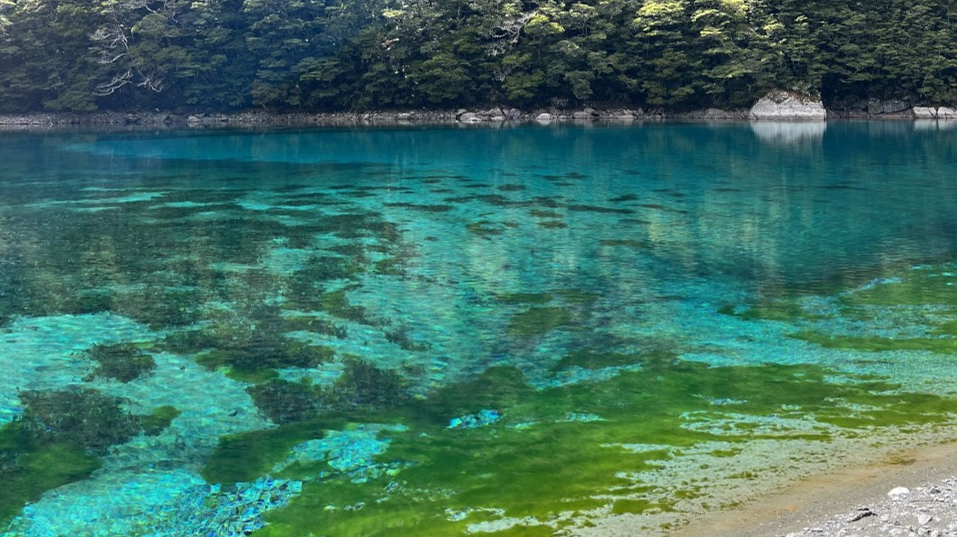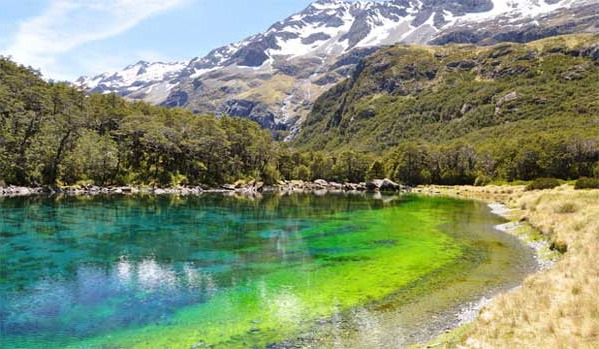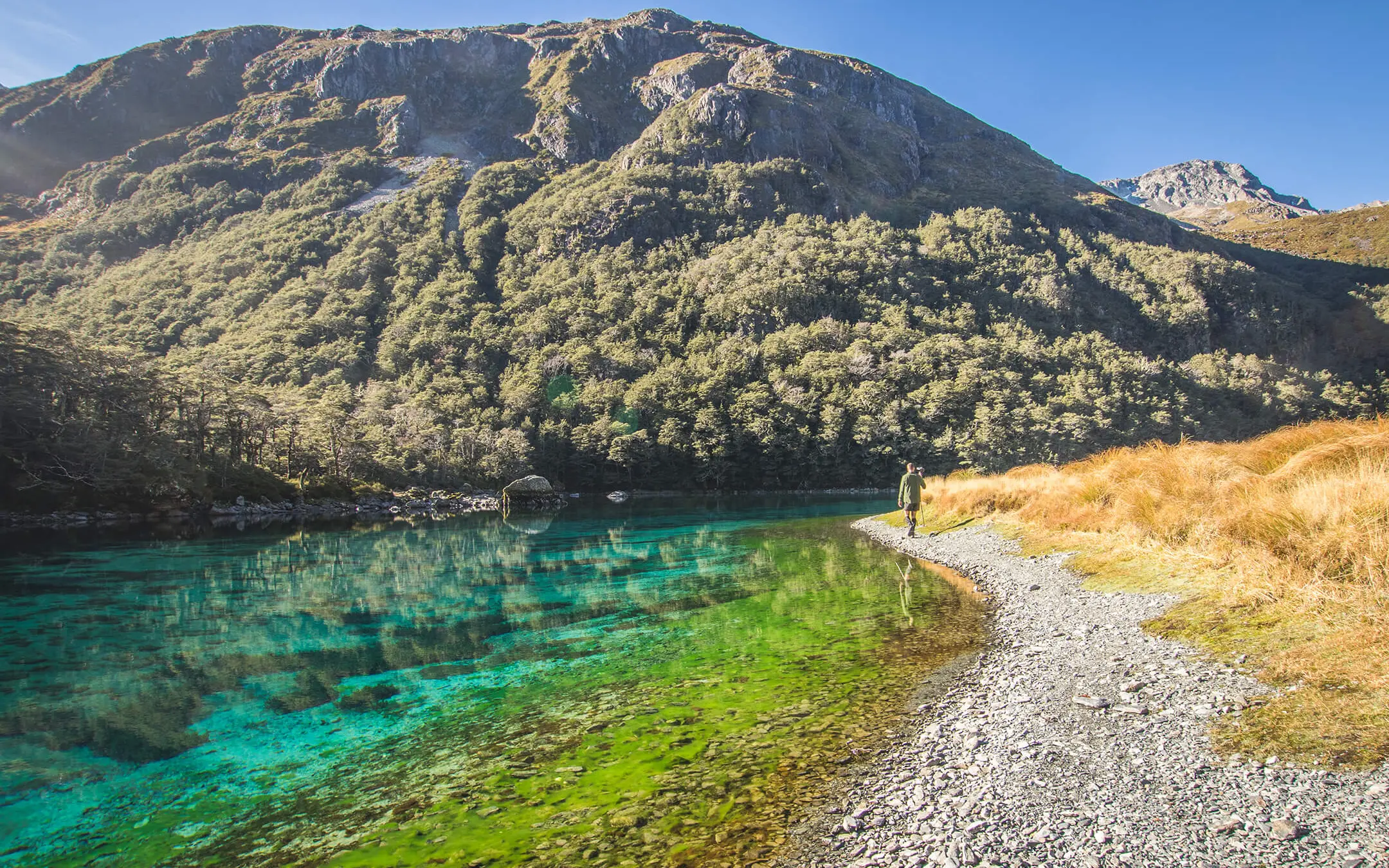Nestled in the pristine wilderness of New Zealand’s South Island, Rotomairewhenua, also known as Blue Lake, holds a distinction unlike any other. Scientifically recognised as the clearest freshwater lake in the world, this remote natural wonder is a breathtaking spectacle of nature’s purity.
With visibility reaching an astonishing 80 meters, comparable to distilled water, Rotomairewhenua is more than just a stunning sight—it is a symbol of unspoiled natural beauty and a subject of scientific fascination.
The Science Behind the Exceptional Clarity
The unparalleled clarity of Rotomairewhenua has been the focus of extensive scientific research. Studies conducted by New Zealand’s National Institute of Water and Atmospheric Research (NIWA) have confirmed that the lake’s visibility can reach 80 meters, making it the clearest natural body of water on Earth. For comparison, distilled water has a theoretical clarity of around 83 meters, placing Rotomairewhenua just shy of absolute purity.
The lake’s exceptional transparency is attributed to its unique hydrological conditions. Fed by underground springs from Lake Constance, another pristine alpine lake situated just above it, Rotomairewhenua undergoes a natural filtration process.
As the water seeps through the landslide debris separating the two lakes, impurities and sediments are naturally removed, leaving behind only the purest water. This filtration process not only enhances the lake’s clarity but also maintains its striking blue-violet hue, a result of the way light interacts with the water’s molecules.
Read : Lake Victoria is Turning Green Due to Deadly Bacteria
Another critical factor contributing to the lake’s purity is its minimal human interference. Located within Nelson Lakes National Park, Rotomairewhenua remains largely untouched by human activity.
Это миниатюрное пресноводное озеро со сложным названием Rotomairewhenua считается самым чистым озером в Новой Зеландии и одним из чистейших озер на планете. Вода в озере является экстремально чистой, а купание в озере запрещено. pic.twitter.com/03EvIawILG
— Заблудший Овц (@s_baskak) December 26, 2024
The strict conservation efforts in place ensure that no pollutants, organic matter, or disturbances affect the lake’s delicate ecosystem. Due to its sacred significance to the local Māori people, swimming or direct human contact with the water is strictly prohibited, further preserving its pristine condition.
Cultural and Spiritual Significance
Beyond its scientific appeal, Rotomairewhenua holds deep cultural and spiritual significance for the Ngāti Apa ki te Rā Tō, a Māori iwi (tribe) indigenous to the region.
In Māori tradition, Rotomairewhenua is regarded as a sacred site with profound spiritual importance. The name itself translates to “Lake of Peaceful Lands”, reflecting the tranquil and untouched nature of the lake.
According to Māori belief, the lake is considered a resting place for spirits before they journey to the afterlife. Because of this, swimming, fishing, or any form of disturbance is strictly forbidden.
The sacredness of the lake ensures that it remains in its purest form, untouched by modern influences or recreational activities. Visitors to the lake are encouraged to respect its cultural importance, observing its beauty from a respectful distance rather than interacting with the water directly.

The Ngāti Apa ki te Rā Tō iwi has played a crucial role in protecting the lake, working alongside the New Zealand Department of Conservation to enforce conservation policies and ensure that traditional Māori values continue to guide the stewardship of this extraordinary site.
The iwi’s commitment to preserving the lake is a testament to the powerful connection between Indigenous communities and the natural environment, emphasizing the importance of cultural heritage in conservation efforts.
The Challenges of Conservation and Future Protection
Despite its remote location and cultural protection, Rotomairewhenua faces ongoing challenges in conservation. Climate change, environmental shifts, and increasing interest from tourists pose potential risks to the lake’s delicate ecosystem.
While strict regulations prevent direct human contact, even the presence of hikers and visitors in the surrounding areas can lead to unintended environmental impacts, such as soil erosion, waste accumulation, and disturbance to local wildlife.
One of the most pressing concerns is the impact of climate change on the lake’s hydrological balance. As global temperatures rise, the risk of altered precipitation patterns, glacier melt, and ecosystem shifts could affect the water flow into Rotomairewhenua.
Even slight changes in water quality or filtration processes could impact the lake’s clarity, making it crucial for researchers and conservationists to monitor and mitigate potential threats.

New Zealand’s Department of Conservation (DOC) has implemented strict access restrictions to protect the lake. Only a limited number of visitors can reach the area, typically experienced hikers trekking through the Nelson Lakes National Park.
Additionally, environmental monitoring programs have been established to regularly assess the water quality, biodiversity, and overall health of the lake’s ecosystem.
Innovative conservation efforts, including partnerships with local Indigenous groups and international environmental organizations, are being explored to enhance protection strategies.
These efforts aim to raise awareness about Rotomairewhenua’s significance, promote sustainable tourism practices, and ensure that this natural wonder remains unspoiled for generations to come.
In conclusion, Rotomairewhenua stands as one of the most extraordinary natural wonders on Earth. Scientifically recognized as the clearest freshwater lake in the world, its pristine waters serve as a benchmark for purity, a sacred site for the Māori people, and a powerful reminder of the importance of conservation.
Through dedicated environmental protection, cultural respect, and global awareness, we can ensure that this breathtaking lake continues to inspire awe and wonder for centuries to come.

